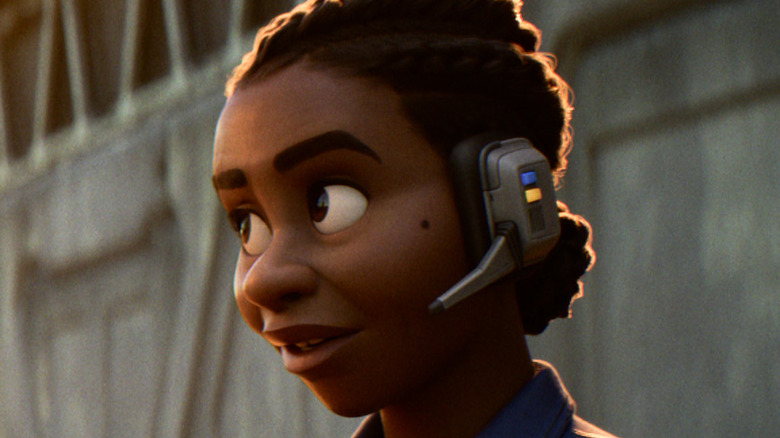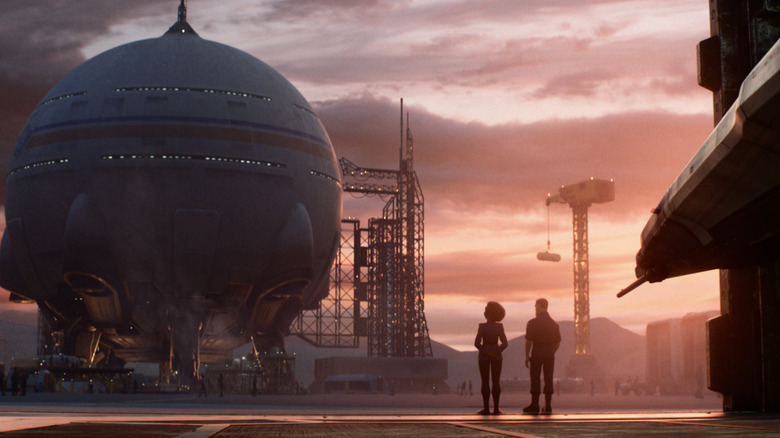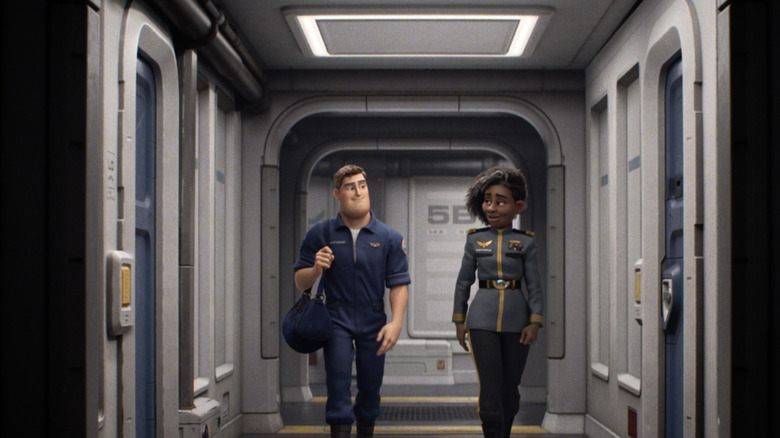Galyn Susman And Angus MacLane Discuss Depicting Pixar's First On-Screen Lesbian Couple In Lightyear - Exclusive
It's wild that in 2022, there still hasn't been significant LGBTQ+ representation in major animated films. Outside of minor characters and relatively throwaway lines, LGBTQ+ characters have been relatively nonexistent — until now. "Lightyear" is changing that by not only offering Pixar's first on-screen lesbian kiss, but also in depicting Buzz's (Chris Evans) commander, Alisha (Uzo Aduba), as having a full love story with her partner.
Representation is such a critical aspect of growing up, feeling seen, and finding self-love. When young kids — and even adults — don't see themselves on screen, it's easy to internalize feeling like they don't belong — or that they are inferior to the people constantly getting their stories told. Any way you swing it, that message is not okay, and it's great to see more and more films and TV shows working to combat the status quo and dive into narratives other than the ones we've seen time and again.
During an exclusive interview with Looper, "Lightyear" producer Galyn Susman and writer-director Angus MacLane got candid about their research process to properly represent Alisha's story, and they also shared why it is such an integral part of the movie.
They dove into research to get it right
Putting forth some of the first substantial lesbian representation in an animated film came with pressure to get it right, which meant talking to a lot of people during the development process. On what some of those early conversations looked like, Galyn Susman said, "We pride ourselves [on] research, right? Go to NASA to get into the real nitty-gritty of what [that experience is like]." The producer explained that the same concept could be applied to this subject as well and that they wanted to make sure the film was positively representing the lesbian community.
She elaborated, "Same thing [here]. Meeting with a group of people within the LGBTQ community to have conversations [like] 'What should this character look like? What are the hallmarks of authentic representation? How do we do this in a way that feels like you can own this character like you are going to see yourself on screen?'" Those were the questions the filmmakers asked themselves in their efforts to do right by the storyline and the LGBTQ+ viewers who would later watch the movie.
They wanted it to enrich the story rather than be a 'superfluous' inclusion
Perhaps unsurprisingly, Galyn Susman was very conscious of how audiences would be able to relate to the characters in "Lightyear," including Alisha. "That was probably the most important aspect of this development of this character ... we make our films to be seen by everybody, but everybody wants to be seen in the film," she continued. "You need to learn about people. It's mostly what it's about, talking to people and learning what makes them tick and trying to get that into the film as well." Those efforts are ones they're hoping come across to audiences in the final product.
Angus MacLane noted that they wanted the storyline to have substance rather than checking off a box. He explained, "Also, we wanted the characters to be essential to the movie and not be a superfluous thing. If anything, baking that into the story was something that was necessary and also really functional for us."
Adding how the plotline enhances the story on all levels, MacLane said, "I wanted Buzz's relationship to not be [a] romantic relationship with Alisha, and that's served double duty. It was also accurate representation ... it was not a question you were answering. They had a non-romantic relationship because Buzz is best when he is not entangled in romantic [relationships]."
"Lightyear" premieres exclusively in theaters on June 17.


